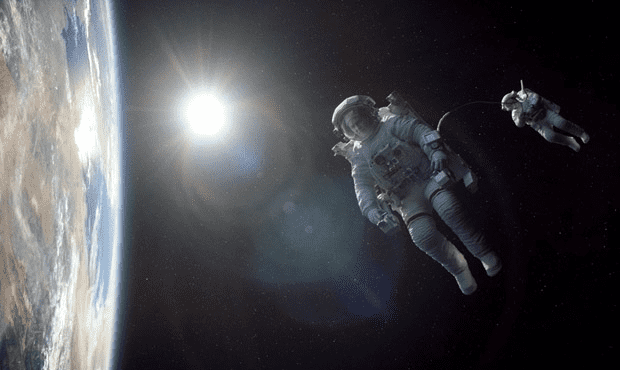The opening
titles of Alfonso Cuarón’s newest film Gravity
warn that life in space is impossible. The rest of the film puts that
thesis to the test as rookie astronaut Ryan Stone (Sandra Bullock) and veteran
Matt Kowalski (George Clooney) struggle to survive as a relentless debris storm
destroys the space shuttle, and pretty much anything else in orbit capable of
supporting life. The plot is straight-forward and psychologically relentless as
one disaster after another challenges Stone’s ability and willingness to make
it safely to Earth. Cuarón’s Gravity triumphs
because of three strengths: its use of space as a setting, the performances of
Bullock and Clooney, and Cuarón’s directorial skill.
While outer
space serves as the setting for the film, Gravity
continually shifts the film’s focus between shots of Earth and vastness of
outer space and the cramped world that Stone inhabits. The opening of the film
consists of one extended shot—I’m not sure how long exactly, but it is long. Cuarón
lingers on the majesty and loneliness of space as the nervous Stone and the lame
humor of Kowalski flutter in and out of view.
After Stone becomes separated from the space shuttle, she drifts off
into space, spinning out of control and seemingly lost forever, until Kowalski
appears as a growing speck in the distance eventually reining in the wayward
astronaut. With these shifts, Gravity evokes
Kubrick’s 2001 in depicting the
wonder of outer space. Also, not since 2001
has space seemed so empty, vast, and cold.
 |
| Bullock and Clooney, just hanging out. |
Bullock and
Clooney provide the star power necessary to carry such a straight-forward plot
that relies on the audience believing in these characters as people trying to
survive in extraordinary circumstances. Clooney carries himself with charm,
annoying confidence, and the wisdom of a seasoned veteran (astronaut or actor,
it doesn’t really matter). His droll stories and repetition of ordinarily
mundane dialogue grows more meaningful with each utterance. His instance that
he “has a bad feeling about this mission” becomes more poignant with each
rendering. Clooney conveys Kowalski’s confidence and experience with ease and
offers a strong counterpoint to Stone’s anxious competence. In Gravity, Bullock gives the performance
of her career. Actors rarely win Oscars for their performance (The Blind Side is only bearable because
of her, the rest of the film is the worst kind of liberal paternalism that
passes as a story of African-American uplift), but Bullock deserves it here.
She expertly balances Stone’s abilities and apprehensions. Her physical acting
skill shines through in the few scenes outside of her space suit. When Stone
seemingly reaches safety inside the International Space Station, she curls up
into a fetal position in one of the film’s most beautiful visual moments. Her
movement is natural considering her circumstances. Bullock performs the act
with a startling compactness. Her body moves with purpose and without waste. It
is a simple movement, practiced and executed to perfection, and it embodies the
greatness of Gravity.
Cuarón works
rarely and chooses his projects carefully. His last film, Children of Men, portrays a dystopian film where humanity has lost
the ability to reproduce. Never has the future seemed so irreversibly dead. Cuarón’s
Harry Potter and the Prisoner of Azkaban remains
the best of the Harry Potter films. He treats the magic of the Potter universe
with respect and captures the growing maturity and sense of impending danger of
its characters. He waited until the 3D technology pioneered by James Cameron in
Avatar before attempting to make this
film. He wisely ignored the advice of studios who wanted to include a countdown
clock, flashbacks, and views of a rescue mission. Cuarón kept the focus where
it needed to be, on one woman’s awe-inducing journey of survival. In doing so,
he offered movie audiences a stunning mediation on grasping life from the jaws
of death.

No comments:
Post a Comment